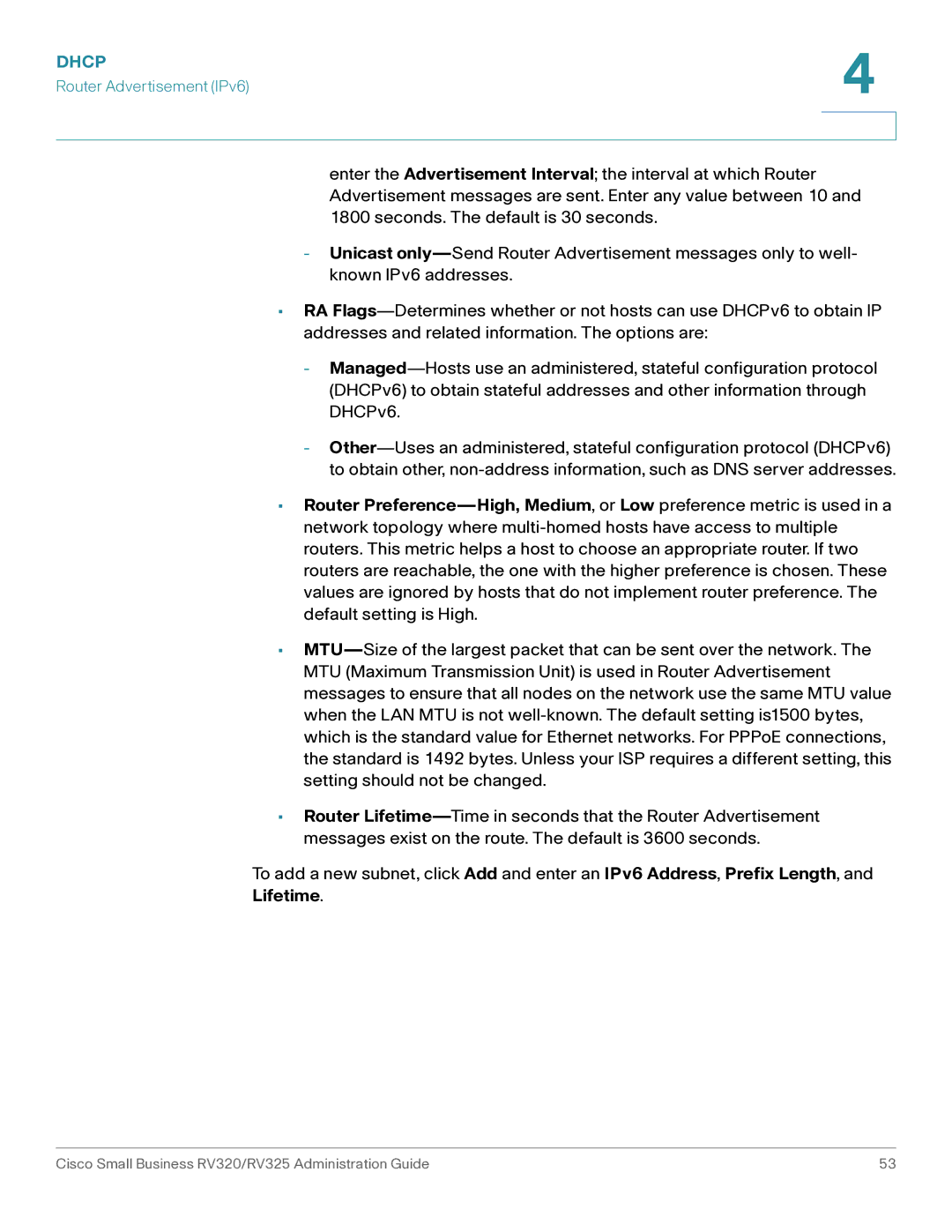DHCP | 4 |
|
Router Advertisement (IPv6) | |
| |
| |
enter the Advertisement Interval; the interval at which Router Advertisement messages are sent. Enter any value between 10 and 1800 seconds. The default is 30 seconds.
- Unicast only—Send Router Advertisement messages only to well- known IPv6 addresses.
•RA Flags—Determines whether or not hosts can use DHCPv6 to obtain IP addresses and related information. The options are:
-Managed—Hosts use an administered, stateful configuration protocol (DHCPv6) to obtain stateful addresses and other information through DHCPv6.
-Other—Uses an administered, stateful configuration protocol (DHCPv6) to obtain other, non-address information, such as DNS server addresses.
•Router Preference—High, Medium, or Low preference metric is used in a network topology where multi-homed hosts have access to multiple routers. This metric helps a host to choose an appropriate router. If two routers are reachable, the one with the higher preference is chosen. These values are ignored by hosts that do not implement router preference. The default setting is High.
•MTU—Size of the largest packet that can be sent over the network. The MTU (Maximum Transmission Unit) is used in Router Advertisement messages to ensure that all nodes on the network use the same MTU value when the LAN MTU is not well-known. The default setting is1500 bytes, which is the standard value for Ethernet networks. For PPPoE connections, the standard is 1492 bytes. Unless your ISP requires a different setting, this setting should not be changed.
•Router Lifetime—Time in seconds that the Router Advertisement messages exist on the route. The default is 3600 seconds.
To add a new subnet, click Add and enter an IPv6 Address, Prefix Length, and
Lifetime.
